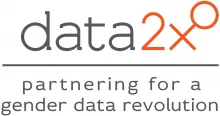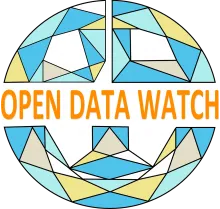On the sidelines of this year’s United Nations Statistical Commission, Data2X, in partnership with Open Data Watch, will launch a new technical report, Bridging the Gap: Mapping Gender Data Availability in Africa. In advance of the launch event, both teams sat down to discuss the motivation behind the project.
Let’s talk about Bridging the Gap. Why did you undertake this new project?
Data2X and Open Data Watch took on this work in order to dig deeper into gender data gaps. And given that this is a large undertaking, we began in one region, in select countries. We mapped gaps in 15 countries in Sub-Saharan Africa (see below) as a start, with the understanding that this exercise may be replicated elsewhere. We wanted to highlight areas that systematically lack important data and point to actionable solutions that the data and policy communities can use to remedy these information gaps. Closing gaps is key to increasing our understanding about the experiences of women and girls and improving their lives.
But aren’t gender data gaps well-documented at this point?
It’s true that there has been a lot of work on gender data gaps over the past few years, but much of the work to date – both by us and by other organizations – has focused on data availability at the international level. Bridging the Gap assesses the availability of 104 gender-related indicators in 15 African countries at the international level, but also digs deeper to examine national and micro-data levels. Looking nationally allows us to see if countries have different approaches to producing indicators and whether the most effective approaches could be replicated in other countries. Exploration of the microdata – the census, survey, or administrative records used to produce the most recent estimate of the indicator – allows us to pinpoint the underlying instruments and assess whether data is in fact being collected but just not being used to produce the indicator. By better understanding the production and availability of gender data at these three different levels, we are able to draw very specific lessons on how to fill gender data gaps and improve production.
How does it build on your previous work? And the work of other organizations?
In 2014, Data2X published Mapping Gender Data Gaps, the first independent study to examine the availability of gender data in international databases. Bridging the Gap refocuses this mapping to the gender indicators of the SDG framework and orients the gap analysis toward country-level availability of gender data at three different levels: international, national, and micro. This type of detailed mapping is quite unique and provides country-specific assessments that can spur concrete action. The project also builds on other efforts such as UN Women’s Making Every Woman and Girl Count and the World Bank’s Gender Data Navigator Tool.
When you say Bridging the Gap examines gender data gaps - what does that mean?
Determining whether a gender data gap exists is more than just noting whether the data is available or not. Several types of gender data gaps may exist. In Bridging the Gap, we look at gaps in four dimensions:
- Availability: Does the gender data exist?
- Disaggregation: Is the data disaggregated by sex and by other relevant characteristics?
- Timeliness: How often is the gender data produced?
- Adherence to standards: Is the gender data accompanied by proper metadata such as the definition of the indicator, how it is calculated, and the compilation period of the survey?
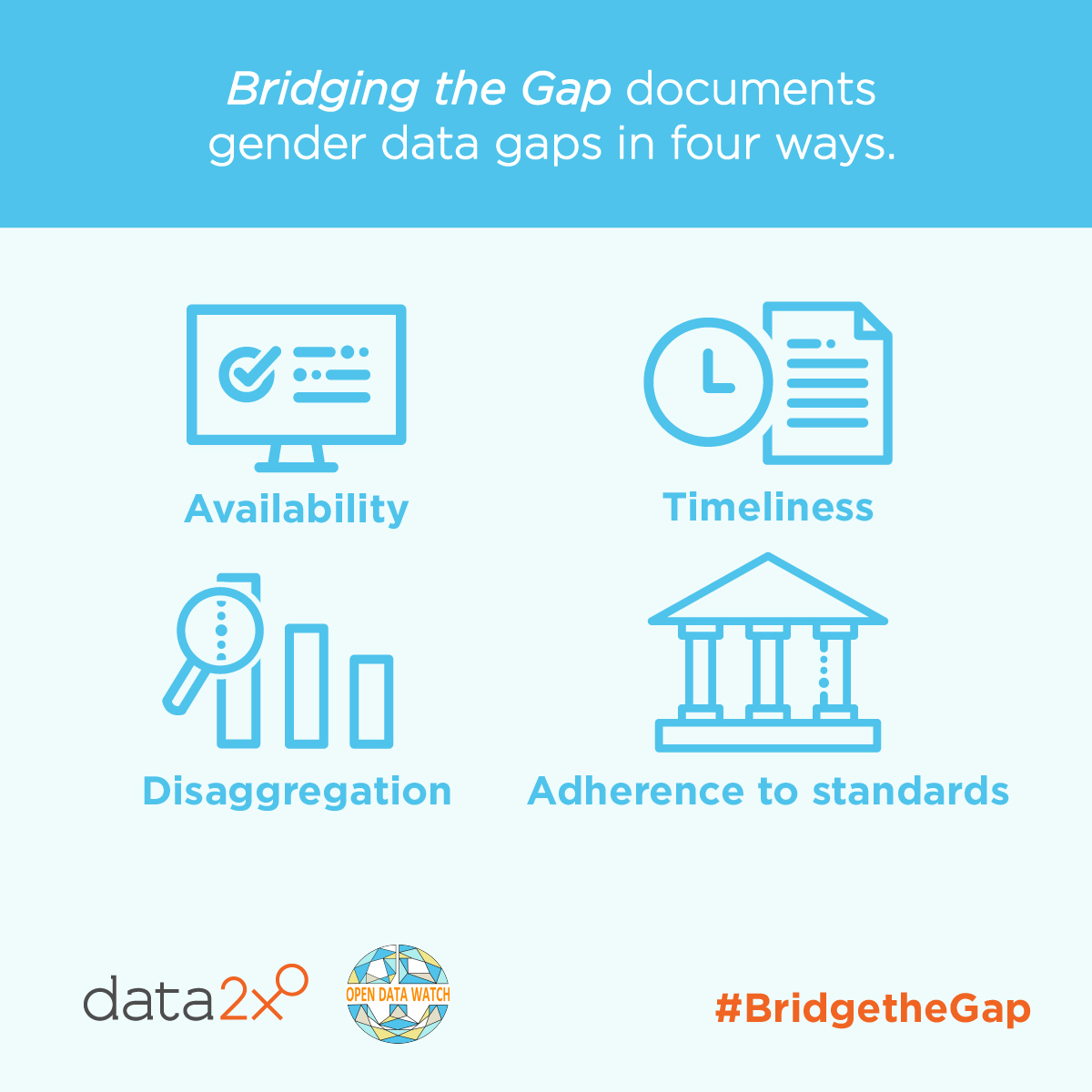
Does Bridging the Gap examine gender data gaps across all development domains?
In our 2014 report we mapped gender data gaps in developing countries across five domains of women’s empowerment: (1) health, (2) education, (3) economic opportunities, (4) political participation, and (5) human security. In our current project, we added a domain encompassing environmental indicators.
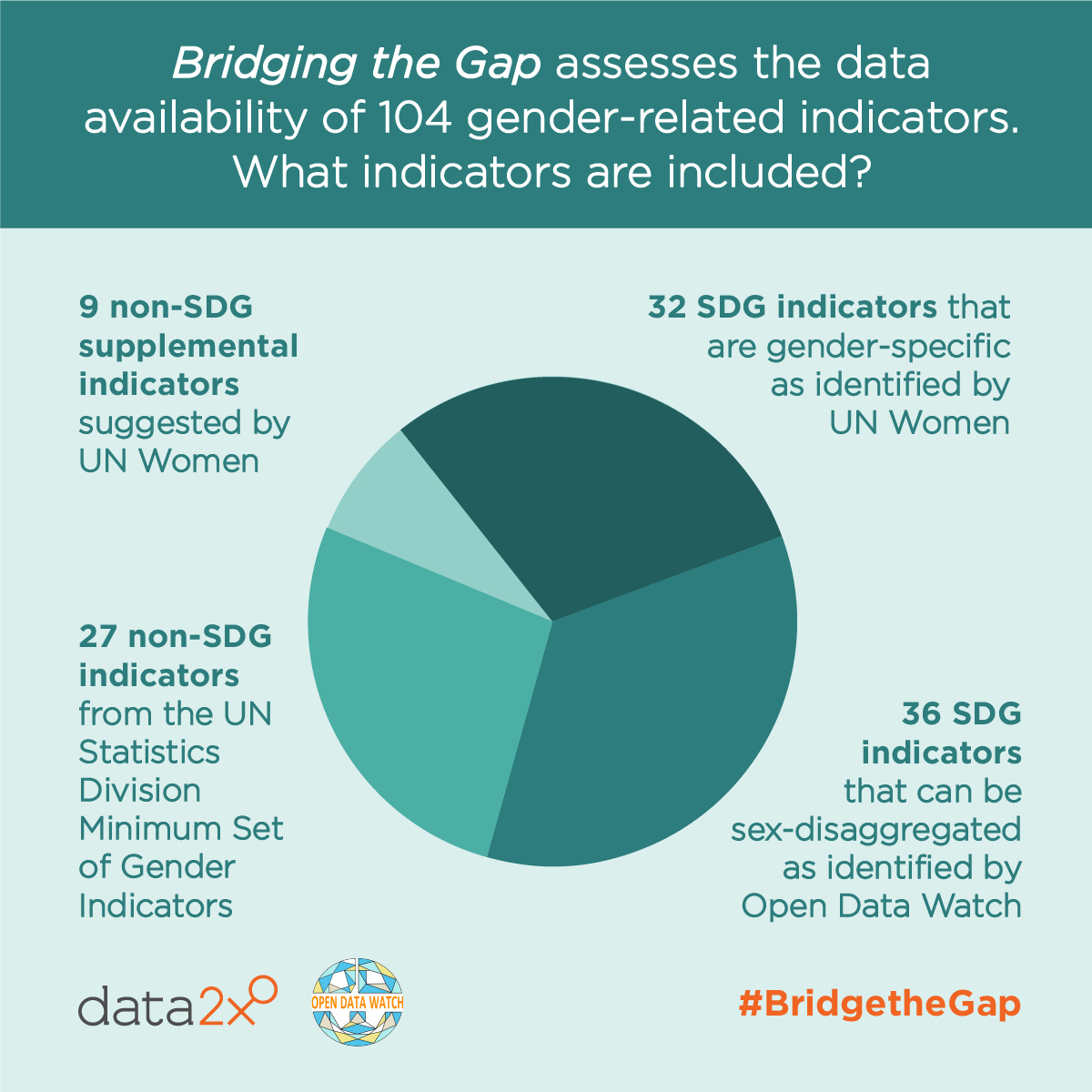
What indicators are assessed by Bridging the Gap?
Because the SDGs are our current global roadmap towards gender equality, we wanted to assess the availability of the 32 gender-specific SDG indicators that are labeled Tier I or II (we know how to produce Tier I and II indicators, but we want to know if they are being produced). However, we also included 36 additional Tier I and Tier II indicators which Open Data Watch identified as being commonly published with sex-disaggregation or gender-relevant, but the SDG indicator description does not specifically require it. This expanded list helps demonstrate the full potential of gender data within the SDGs. However, we all know that gender equality goes beyond the SDGs, and we have taken steps to address this. Six SDGs do not include any gender-specific indicators (6, 7, 9, 12, 14, 15). To overcome these challenges, we included 36 non-SDG indicators from other international sources to paint a full picture of gender equality and the data needed to understand it.
You said these indicators are examined in 15 countries. Why focus on these specific countries?
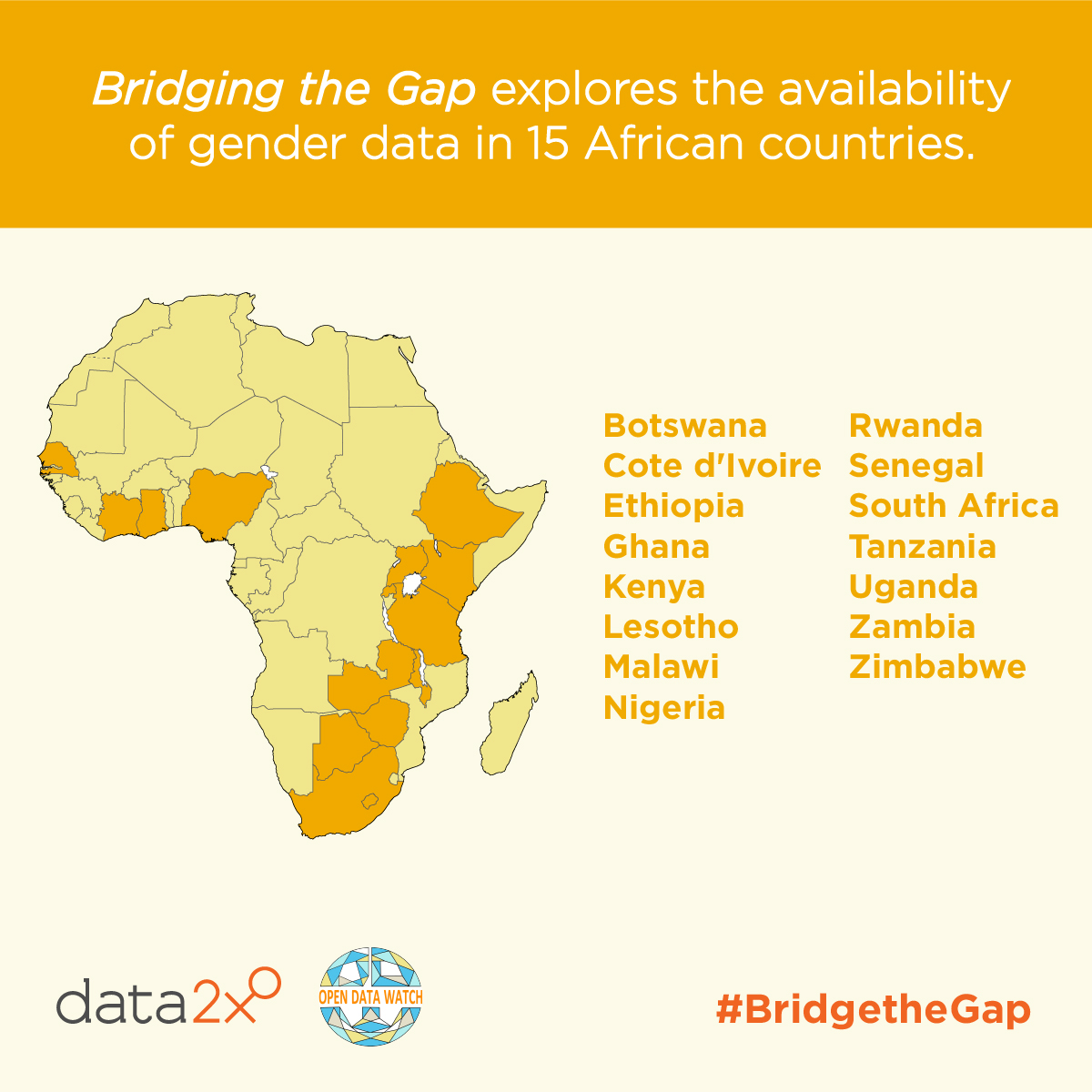
Bridging the Gap looks at gender data gaps for 15 countries in Sub-Saharan Africa. We focused our work on Sub-Saharan Africa because of the many challenges the region faces when it comes to meeting the gender data demands of the SDGs. We were careful to select a diverse group of countries within the region – both in terms of income status and statistical capacity level – in order to better understand the realities that exist within different contexts.
But there were also strategic elements to these choices. The selected countries are strongly linked to our ongoing gender data focal points program. We hope the country-specific gender data assessments can offer tailored possibilities for overcoming barriers, which our focal points for those countries can then take up. Some countries also have other active gender data initiatives, so we wanted to take advantage of opportunities to leverage solutions.
Any sneak peek findings to share?
It will come as no surprise that despite the attention gender data has captured, gaps are persistent and widespread, especially in the environment and sustainability domains – where only 10 percent of indicators are sex-disaggregated. We also found that a handful of indicators, particularly those in the human security domain, lack data of any kind. And while sex-disaggregation is critical, it is becoming increasingly important to have disaggregated data beyond sex that can shed light on subpopulations such as rural, elderly, or disabled women. Unfortunately, we are finding a common trend that many indicators fail to meet their specified “Leave No One Behind” criteria. Lastly, the availability of data differs significantly between countries. This speaks to the importance of having country-specific solutions to filling gender data gaps. We look forward to sharing more findings throughout the month of February, so make sure to follow Data2X and Open Data Watch on Twitter.
Identifying gaps is only the beginning – where do we go from here?
This work focuses on the gender data gaps that exist as well as solutions for filling them. As noted above, on the sidelines of the 50th United Nations Statistics Commission in March we will release the technical report at our side event, Bridging the Gap: Mapping Gender Data Gaps and Exploring Solutions. The report will highlight our methodology, providing a template for others to replicate, and share the main findings from our macro- and micro-level gender data assessments. Later this year, we plan to release a policy-oriented report that will translate this research into evidence-based recommendations for action. Stay tuned!
